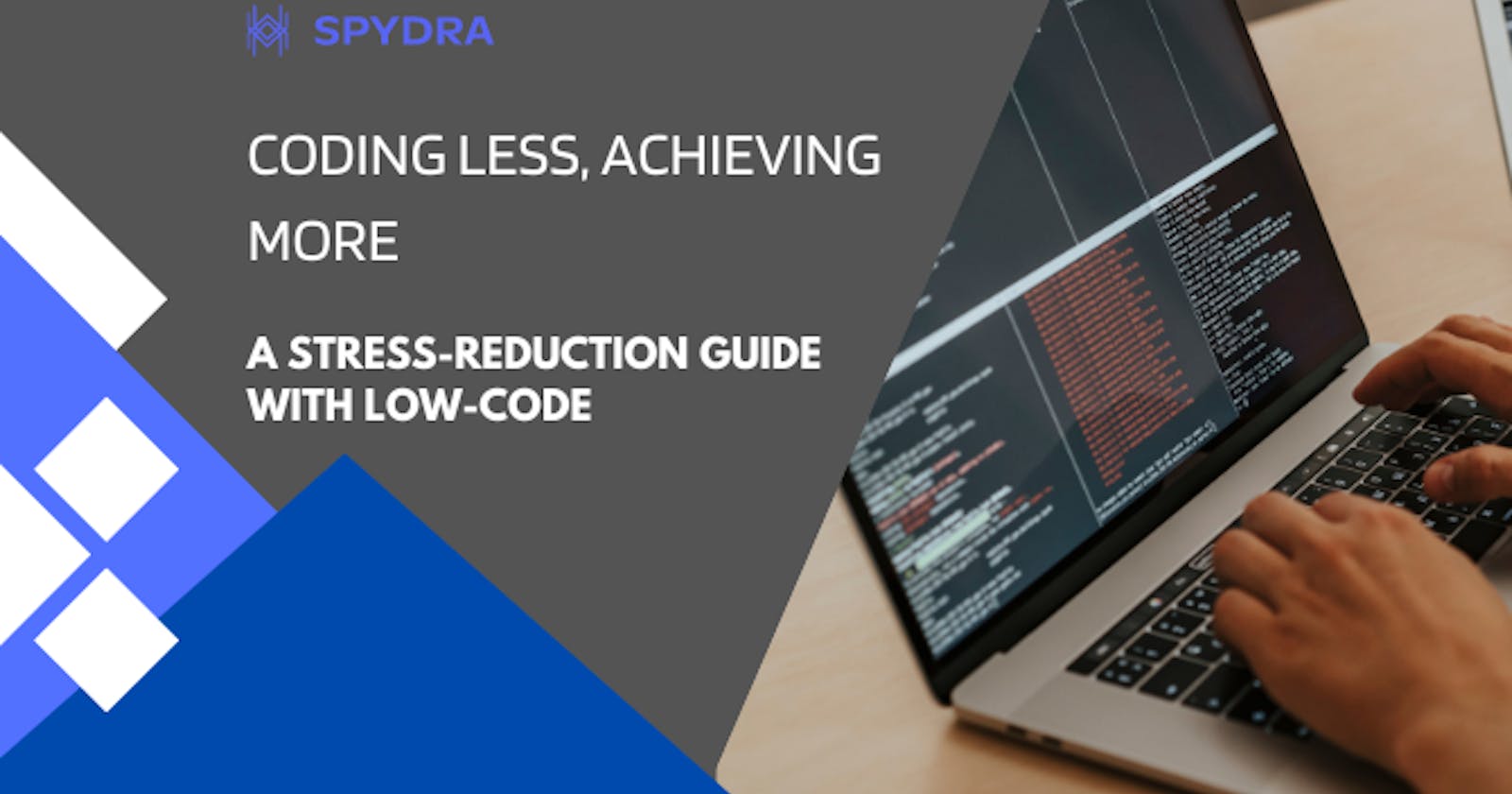As a software developer, you know that coding can be a stressful job. There are always deadlines to meet, bugs to fix, and new technologies to learn. But what if there was a way to reduce the amount of coding you do and still achieve great results?
That's where low code comes in. Low code is a software development approach that uses drag-and-drop tools and visual programming languages to create applications. This can help you to develop applications faster and with less code, which can lead to less stress and more productivity.
How Low-Code Can Reduce Stress
There are many ways that low code can reduce stress for software developers. Here are a few of the most common benefits:
Reduced coding time: Low-code tools can help you to create applications faster than traditional coding methods. This means you can spend less time coding and more time on other tasks, such as designing, testing, and deploying your applications.
Simplified coding process: Low-code tools make the coding process simpler and more intuitive. This can help you to avoid errors and bugs, which can be a major source of stress for developers.
Increased productivity: Low-code tools can help you to be more productive by automating repetitive tasks and providing visual representations of your code. This can free up your time so you can focus on the more important tasks.
Improved collaboration: Low-code tools can make it easier to collaborate with other developers and stakeholders. This can help to reduce miscommunication and errors, which can also be a source of stress.
Enhanced creativity: Low-code tools can help you to be more creative by providing you with a visual canvas to work on. This can help you to come up with new ideas and solutions more easily.
How to Get Started with Low-Code
If you're interested in reducing stress and improving your productivity with low-code, there are a few things you need to do.
Learn the basics of low-code: There are many resources available online and in libraries that can teach you the basics of low-code.
Choose a low-code platform: There are many low-code platforms available, so it's important to choose one that's right for you. Consider your needs and budget when making your decision.
Get hands-on experience: The best way to learn low-code is to get hands-on experience. There are many low-code platforms that offer free trials or community editions.
Join a low-code community: There are many low-code communities online where you can ask questions and get help from other developers.
Conclusion
Low-code is a powerful tool that can help you to reduce stress and achieve more in your career. By following the tips above, you can get started with low-code and start enjoying the benefits today.
Here are some specific examples of how low-code can be used to reduce stress in the workplace:
Automating repetitive tasks: Low-code tools can be used to automate repetitive tasks, such as data entry and testing. This can free up developers' time so they can focus on more creative and strategic work.
Creating visual representations of code: Low-code tools can be used to create visual representations of code, which can make it easier to understand and debug. This can help to reduce errors and improve the quality of code.
Collaborating with other developers: Low-code tools can make it easier to collaborate with other developers by providing a shared workspace and version control. This can help to avoid miscommunication and errors.
Empowering non-technical users: Low-code tools can be used to empower non-technical users to create applications. This can help to reduce the workload on developers and make it easier for businesses to innovate.
If you are looking for a way to reduce stress and achieve more in your career, low-code is a great option to consider. With low-code, you can focus on the things that matter most and leave the coding to the machines.
I hope this blog has helped you to understand the benefits of low-code and how it can be used to reduce stress in the workplace. If you are interested in learning more about low-code, I encourage you to check out the resources I mentioned above.

